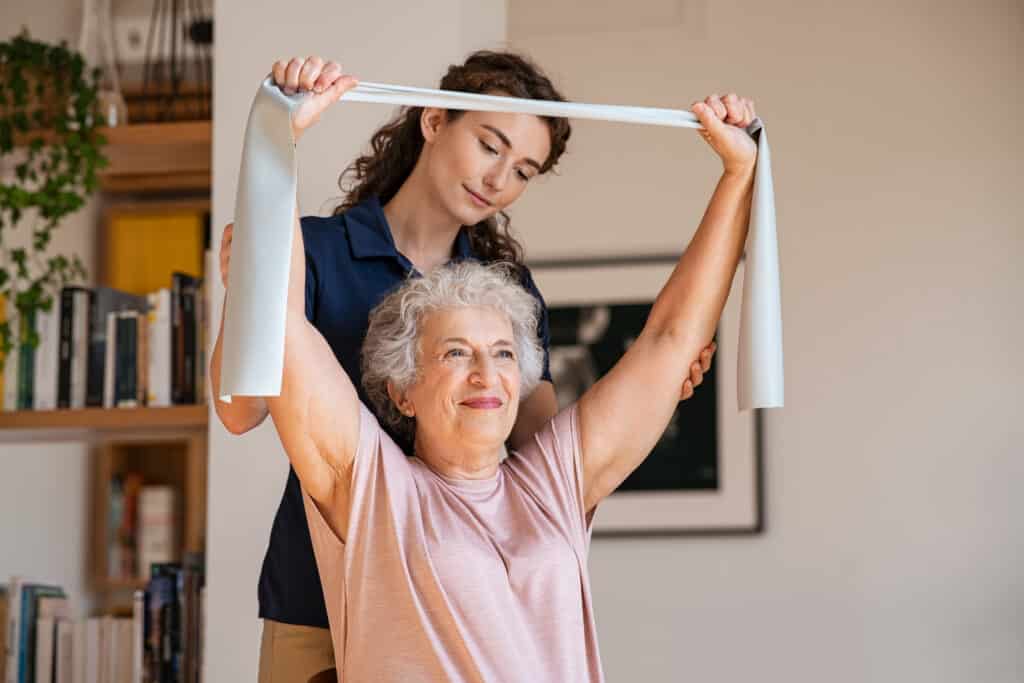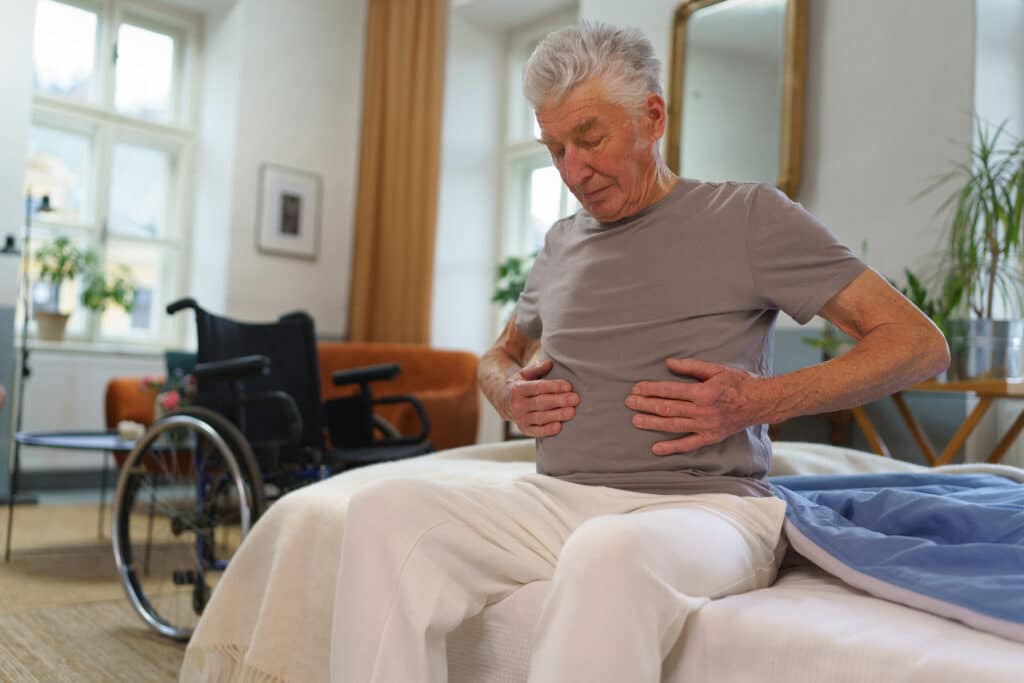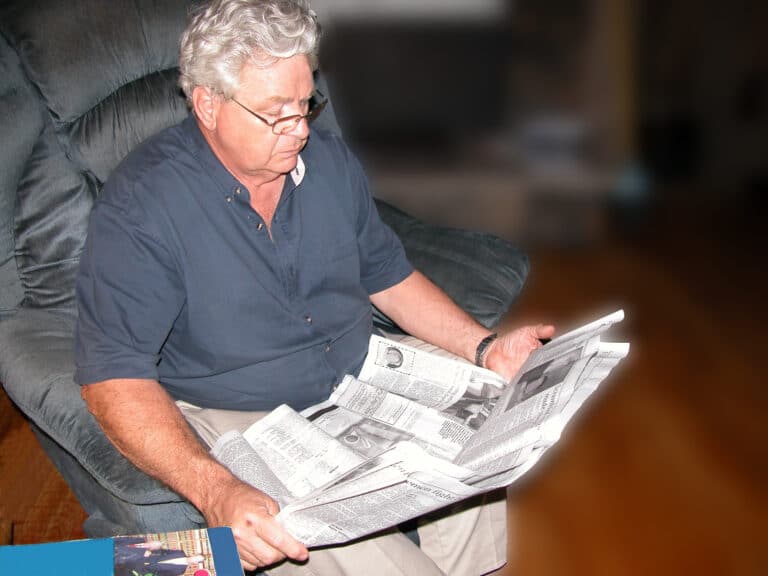Posture affects many aspects of your life, from balance and movement to long-term health and well-being. If you have been told that you have flared ribs, you may wonder how they impact your posture and what you can do to fix them.
Flared ribs are not always a problem, but they can sometimes indicate shallow breathing or other serious conditions. They can be a natural feature of your bone structure or a result of poor posture, weak core muscles, or limited shoulder mobility.
This article will explain what causes them and how to fix them with exercises, physical therapy, and some useful posture tips you can try today.
What are Flared Ribs?
Flared ribs are when the lower part of the rib cage is more visible and protrudes outwards and upwards. You can feel them with your hands or see them in the mirror.
Some people have rib flare as part of their normal anatomy. This means they are born with them, and changes due to postural adjustment will be minimal. [1]
Others have flared ribs due to lifestyle factors such as poor posture, weak core muscles, or limited shoulder mobility. These factors can cause the rib cage to move out of alignment, creating movement compensations or breathing dysfunction.
Flared ribs sometimes indicate shallow breathing, which means you are not using your diaphragm muscle enough to breathe deeply. Shallow breathing can affect your heart and lung health and cause unnecessary stress and anxiety. [2]
If you notice flared ribs or are having trouble breathing, consult your doctor or physical therapist. They can help you determine the cause and the best treatment for your condition.

How to Fix Flared Ribs
There are three main ways to fix flared ribs: improving mobility, strengthening core muscles, and improving breathing patterns.
Improving Mobility
Mobility is the ability of your joints and muscles to move freely and efficiently. If you have flared ribs, you may have mobility issues in your lower back, latissimus dorsi (lats), or external oblique muscles.
Your lower back muscles support your spine and hips. If they are too tight or tense, they can cause your back to arch excessively. This can make it harder for your rib cage to stay in a neutral position, contributing to flared ribs.
Your lats (latissimus dorsi) are large muscles on your back that help you lift and pull with your arms. If they are too stiff or tight, they can also cause your back to arch or twist. This can affect the alignment of your rib cage.
Your external obliques are muscles that attach to your ribs and help you compress your abdomen and rotate your trunk. They cannot pull your ribs down and keep them in place if they are too weak or inactive.
Testing Your Mobility
Testing your shoulder flexion is one way to check if you have mobility issues.
A simple test is to raise your arm in front of you and overhead. If you have good shoulder mobility, you should be able to do this without moving your rib cage or arching your back.
If you have poor shoulder mobility, you may compensate by tilting your rib cage backward or upward to reach higher with your arm. This can cause flared ribs over time.
Here are two exercises you can do to improve your shoulder mobility and prevent rib cage compensation:
Wall Slide with Towel
- Stand in front of a wall with a towel in one hand.
- Place the pinky side of your hand on the wall against the towel.
- Slide your hand up the wall slowly while keeping your ribs pointed toward the floor.
- Stop when you feel your ribs starting to move or when you reach as high as you can.
- Pause briefly and return to the start.
- Repeat with the other hand or do both hands simultaneously with two towels or a pillowcase.
Overhead Shoulder Flexion with Stick
- Lie on your back with your knees bent and a broomstick or similar item in both hands.
- Hold the stick with palms down or up grip, whichever feels more comfortable.
- Keep your ribs pointed toward your hips and raise both arms overhead slowly.
- Stop when you feel your ribs starting to move or when you reach as high as you can.
- Pause briefly and return to the start.
Strengthening Core Muscles
Your core muscles include your abdominal muscles, which help support your spine, pelvis, and rib cage. They cannot hold your rib cage in a neutral position if weak or inactive.
Here are two exercises you can do to strengthen your core muscles :
Dead Bug
- Lie on your back with your knees bent and your hands resting on your knees.
- Lift your thighs until they are vertical; keep your knees bent and place your hands on your thighs
- Slowly lower one leg and the opposite arm toward the floor while keeping your rib cage pointed toward your hips.
- Stop when you reach as low as possible without moving your rib cage.
- Pause briefly and return to the start. Repeat for 5 to 10 repetitions.
- Repeat with the other arm and leg.
Plank on Knees
- Start on your hands and knees, with your hands under your shoulders and your knees under your hips.
- Lower onto your elbows and walk your knees back slowly while keeping your back neutral.
- Hold this position while engaging your core muscles and breathing normally.
- Stop when your core muscles are tired or when you lose good form.
A Note About Core Engagement and Posture
Addressing flared ribs isn’t just about exercises; it’s also about keeping your core muscles engaged and paying attention to your posture throughout the day. Imagine your core as a sturdy column supporting your spine and rib cage, keeping everything properly. Engaging these muscles correctly is like giving your body a gentle hug, helping to keep those ribs from sticking out.
Improving your posture can be as simple as imagining a string pulling you up from the top of your head, lifting you taller, whether sitting, standing, or moving around. Engaging in activities like Pilates or yoga can be incredibly helpful, too. These aren’t just for the young or fit; they’re for anyone who wants to move better and feel stronger. These practices teach you how to be more aware of your body and to hold yourself in a way that supports your spine and ribs naturally.
And don’t forget about the power of deep, belly breathing. It’s not just relaxing; it helps engage those core muscles and supports a healthier posture. So, next time you’re sitting down to read or watch TV, take a moment to check in with your posture and take a few deep breaths. It’s a simple step that can make a big difference in how you feel.
By focusing on these areas—core strength, posture, and mindful breathing—you’re not just working on those flared ribs. You’re improving your overall health and well-being, making every step and breath easier. It’s about integrating these habits into your daily life, from sitting at your breakfast table to walking to the mailbox. Small changes can lead to big improvements, making your golden years shine even brighter.
Improving Breathing Patterns
We use several different muscles to breathe. If you have flared ribs, you may have altered breathing patterns that cause you to breathe more through your chest than through your belly.
When you breathe normally, your diaphragm muscle helps your lungs expand and take in air. You can test this by placing your hand over your belly. When your diaphragm is working well, you should see your belly pushing your hand outward—this is healthy breathing.
However, many people tend to breathe more using other muscles, such as those in their ribs or neck. This can happen because of mobility issues or emotional stress. While this is okay during exercise, it can cause problems over time.
By breathing more through your chest, you pull your ribs upward and outward, contributing to flared ribs. How do you avoid this?
Diaphragmatic Breathing
The most straightforward breathing technique I recommend is diaphragmatic breathing, also known as belly breathing. Diaphragmatic breathing helps reduce chest breathing, activate your diaphragm, and lower stress.
Here’s how to do it:
Diaphragmatic breathing can be done standing, sitting, or lying on your back—choose what feels comfortable. I suggest lying on your back for beginners because keeping your rib cage still is easier.
Place one hand over your belly, just above your belly button. Gently inhale through your nose, raising your hand closer to the ceiling using only your belly. Stop when you reach a full inhale or feel your rib cage moving, then exhale slowly through your mouth back to the start.
If you have trouble feeling your rib cage position, place your other hand on your ribs and try not to move it while inhaling.
Diaphragmatic breathing can be done often during an exercise session, but it works best when practiced frequently throughout the day. Whenever you can, focus on breathing through your belly with minimal motion through your rib cage. Many of my patients see improvements in their breathing patterns after a few days or weeks.
Key Takeaways
- Flared ribs refers to the lower ribs protruding more than usual. This can be a natural bone structure or result from external factors.
- Flared ribs are not always problematic but can indicate conditions like shallow breathing. Some people are born with flared ribs as part of their normal anatomy.
- Lifestyle factors contributing to flared ribs include poor posture, weak core muscles, and limited shoulder mobility. Shallow breathing, common with flared ribs, can lead to stress and anxiety and impact heart and lung health.
- Addressing tightness in the lower back, lats, and external oblique muscles can help with rib flaring.
- Wall Slide with a Towel and Overhead Shoulder Flexion with a Stick are effective exercises to improve mobility.
- Core muscles supporting the spine, pelvis, and rib cage can be strengthened with exercises like Dead Bug and Plank on Knees.
- Focusing on diaphragmatic or belly breathing helps in improving breathing patterns. Regularly practicing diaphragmatic breathing can enhance breathing patterns within days or weeks.
FAQs
Why is maintaining a proper posture important for our overall health?
Proper posture ensures the correct alignment of bones and muscles, reducing joint wear and tear. It also ensures that organs are in the right position and can function at their peak. Over time, poor posture can lead to various health issues, including chronic pain, impaired lung function, and digestive problems.
How do lifestyle factors contribute to flared ribs?
A sedentary lifestyle, prolonged sitting, lack of physical activity, or specific repetitive motions can lead to poor posture, weak core muscles, or limited shoulder mobility—all potential contributors to flared ribs.
Are there any visual signs other than flared ribs to indicate shallow breathing?
Yes, signs of shallow breathing include rapid chest movements, using neck and shoulder muscles while breathing, and a lack of belly movement during inhalation.
Besides exercises, are there any tools or supports to help correct flared ribs?
Yes, posture braces, physical therapy, and sometimes taping can provide external support and cueing to help correct rib alignment. However, consulting a healthcare professional before using any device or support is crucial.
Are there any preventive measures one can take to avoid developing flared ribs?
Maintaining good posture, regularly engaging in core-strengthening exercises, practicing deep breathing exercises, and ensuring shoulder mobility can be preventive measures against developing flared ribs.





